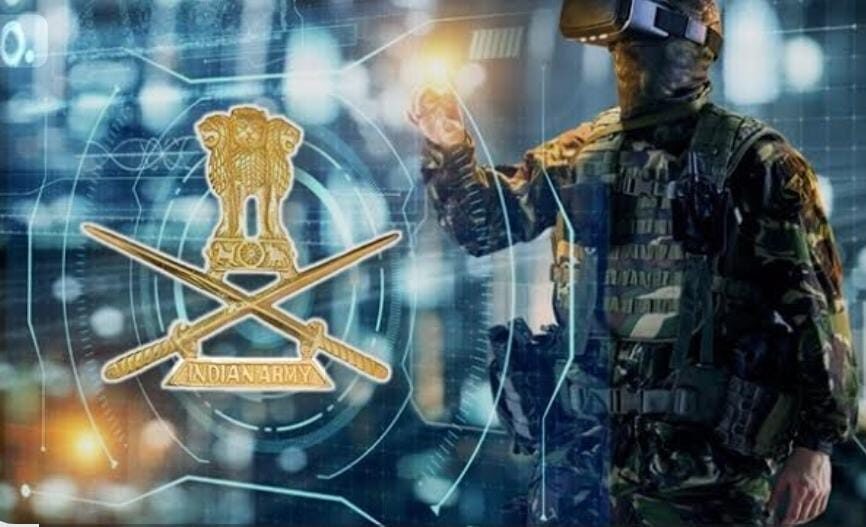Army Technology: Advancing Modern Warfare
Army technology has evolved dramatically over the centuries, from primitive tools and weapons to cutting-edge systems powered by artificial intelligence, robotics, and advanced materials. To maintain superiority in combat, logistics, intelligence gathering, and overall defense strategy, military forces worldwide today, particularly those in technologically advanced nations, heavily rely on sophisticated technologies. Army technology not only improves operational effectiveness and efficiency, but it also contributes significantly to global stability and national security.Army Technology: Advancing Modern Warfare
The Evolution of Army Technology

Historically, army technology was limited to innovations like swords, shields, and later, firearms and artillery. The Industrial Revolution marked a turning point, introducing mechanized warfare with tanks, airplanes, and chemical weapons. In the 20th century, especially during World War I and World War II, rapid technological advancements led to the creation of radar systems, ballistic missiles, and nuclear weapons.í
Today, army technology encompasses a broad range of innovations across multiple fields, including communication, surveillance, weaponry, mobility, cyber defense, and more. The modern soldier is not just a combatant but also a highly trained operator of sophisticated systems.
Key Areas of Army Technology
1. Weapons and Firepower
Modern armies use advanced weaponry to increase firepower while minimizing collateral damage. Precision-guided munitions, also known as smart bombs, can hit specific targets with great accuracy. Assault rifles and sniper systems now integrate computerized aiming systems that adjust for factors like wind, distance, and movement.
Hypersonic weapons, capable of flying at more than five times the speed of sound, are becoming a game-changer in modern warfare. These weapons reduce reaction times and can penetrate traditional missile defense systems.Army Technology: Advancing Modern Warfare
2. Communication and Networking
Effective communication is critical for coordinating operations and ensuring real-time decision-making. Modern military communication systems use encrypted radio frequencies, satellite communication, and secure mobile networks to keep commanders and soldiers connected.rm
The concept of a “network-centric” army relies on seamless data sharing between various units and command centers. This allows for coordinated strikes, timely intelligence updates, and rapid adaptation to battlefield changes.
3. Unmanned Systems and Robotics
One of the most significant advancements in army technology is the integration of unmanned systems. Drones, or unmanned aerial vehicles (UAVs), are widely used for surveillance, reconnaissance, and targeted strikes. These platforms reduce the risk to human life and provide real-time battlefield intelligence.
Ground-based robots are also used to handle dangerous tasks like bomb disposal, surveillance in urban combat zones, and supply delivery in hazardous environments. Some robotic systems are even equipped with weapons, enabling them to engage in combat under human supervision.Army Technology: Advancing Modern Warfare
4. Cyber Warfare and Electronic Defense
As warfare extends into the digital realm, cyber capabilities are now a crucial part of military strategy. Army’s cyber unit’s area responsible for protecting NETWORKS Frome hacking, surveillances, and sabotage by enemy’s forces’. At the same time, offensive cyber tools can disrupt enemy communications, disable weapon systems, and access critical data.Army Technology: Advancing Modern Warfare
Electronic warfare, which includes jamming enemy radar and communications or spoofing navigation systems, is another essential aspect of modern army technology.
5. Artificial Intelligence and Automation
Artificial intelligence (AI) is transforming how armies process data and make decisions. AI systems can analyze vast amounts of intelligence, identify patterns, and predict enemy movements. Theis enablers commander’s to make Faster and more informed decisions.
Automation is also making logistics more efficient, from autonomous vehicles transporting supplies to predictive maintenance systems that alert when equipment is likely to fail.
6. Advanced Materials and Armor
Modern army technology also includes advances in protective materials and armor. Lightweight, high-strength materials like Kevlar and graphene are used in body armor and vehicle plating to offer better protection without sacrificing mobility.
Stealth technology, developed through specialized coatings and vehicle shapes, reduces radar visibility, giving armies a strategic advantage in both air and ground operations.
Future Trends in Army Technology
Looking ahead, army technology is poised to become even more integrated, autonomous, and intelligent. Some key trends include:
Soldier augmentation: Wearable technologies, exoskeletons, and brain-computer interfaces may enhance soldiers’ physical and cognitive capabilities.
Quantum computing: Could revolutionize encryption, communication, and data processing.
Directed energy weapons: Lasers and microwave systems offer potential as non-kinetic alternatives for disabling enemy equipment.
Swarm robotics: Multiple small drones working collaboratively could be used for surveillance, attacks, or defensive measures.
Ethical and Strategic Considerations
With the rise of autonomous weapons and AI-driven decision-making, ethical concerns have become more prominent. There are debates around accountability in the use of lethal autonomous systems and the need for international regulations. Additionally, concerns about unintended escalation and threats to global security are raised by the militarization of cyberspace and artificial intelligence.Army Technology: Advancing Modern Warfare
Governments and defense organizations must ensure that technological advancements align with international laws and humanitarian principles. Responsible use of technology is crucial in maintaining the delicate balance between military effectiveness and ethical conduct.
Conclusion
The way in which conflicts are fought and won is constantly being reshaped by army technology, which is an evolving field. By leveraging advancements in robotics, AI, communication, and weaponry, modern armies are becoming more capable, efficient, and adaptable The future of warfare will depend not only on technological prowess but also on the wisdom with which it is applied. Collaboration and regulation will be essential to ensuring that these potent tools serve to safeguard rather than jeopardize global peace as nations continue to innovate.
